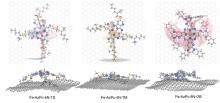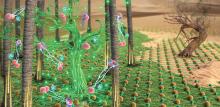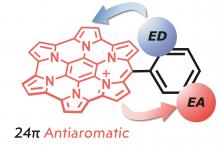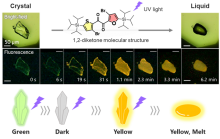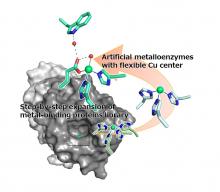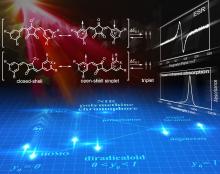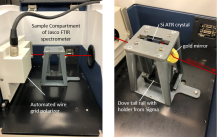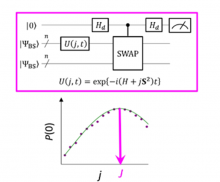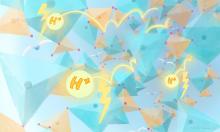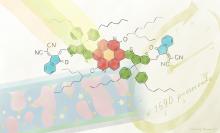Chemical Science
News
28 Mar 2024
Tohoku University researchers have created a reliable means of predicting the performance of a new and promising type of catalysts. Their breakthrough will speed up the development of efficient catalysts for both alkaline and acidic environments, thereby saving time and effort in future endeavors to create better fuel cells.
21 Sep 2023
A group of researchers have unraveled the mysteries behind a recently identified material—zirconium nitride (ZrN) —that helps power clean energy reactions. Their proposed framework will help future designs for transition metal nitrides, paving a path for generating cleaner energy.
27 Jul 2023
Elucidation of global anti-aromaticity (aromaticity) in homoHPHAC+ (homoHPHAC3+) with electron-accepting to electron-donating substituents
16 May 2023
Researchers at Osaka University discovered a new class of photo-responsive crystal compounds, heteroaromatic 1,2-diketones. Certain light irradiation causes the crystals in these materials to melt, dramatically changing the materials’ properties. One member of this class, SO, shows luminescent changes while melting, which enabled the research team to visualize the crystal-melting process at the molecular level. These findings provide fundamental insights into the mechanisms behind crystal melting and will enable future designs of light-responsive materials.
28 Mar 2023
A research group at Osaka Metropolitan University has succeeded in simply creating an artificial metalloenzyme with the common metal-binding motif 2-his-1-carboxylate, which is found in natural non-heme metalloenzymes. They created a library of 12 different proteins and screened the library and found that the H52A/H58E variant had the best stereoselectivity. It is expected that this research can be expanded to produce a variety of biocatalysts that work under mild conditions.
24 Mar 2023
An Osaka Metropolitan University joint research group has discovered that near-infrared absorbing dyes, which had previously been considered to have closed-shell electronic structures, have an intermediate electronic structure, between closed- and open-shell structures. They also found that as the wavelength of near-infrared light that can be absorbed becomes longer the contribution of open-shell forms increases within the dye. These newly discovered characteristics are expected to be utilized to develop new near-infrared absorbing dyes that can absorb longer wavelength near-infrared light.
17 Jun 2021
Researchers at Osaka Prefecture University have established an approach to identify the orientation of molecules and chemical bonds in crystalline organic-inorganic hybrid thin films deposited on substrates using Fourier transform infrared spectroscopy (FT-IR) and polarized infrared light with a 3D-printed attenuated total reflectance (ATR) unit. This inexpensive method with laboratory-grade equipment quickly reaches the crystal-structure model of even extremely thin films of less than 10 nm.
18 Jan 2021
Researchers at Osaka City University use quantum superposition states and Bayesian inference to create a quantum algorithm, easily executable on quantum computers, that accurately and directly calculates energy differences between the electronic ground and excited spin states of molecular systems in polynomial time.
08 Jun 2020
Hokkaido University scientists have succeeded in synthesizing an α,α-difluoroglycine derivative, a type of α-amino acid, based on a reaction path predicted by quantum chemical calculations. This novel method, combining experimental chemistry and computational chemistry, could innovate the development of new chemical reactions.
13 May 2020
Hydrogen fuel cells made with coordination polymer glass membranes could produce as much energy as their liquid-based counterparts while adding strength and flexibility.
05 Mar 2020
Molecular changes could improve the efficiency of next-generation photovoltaics.
Events
Sorry, no events coming up for this topic.
Researchers
Sorry, no researchers coming up for this topic.
Giants in history
Sorry, no researchers coming up for this topic.


